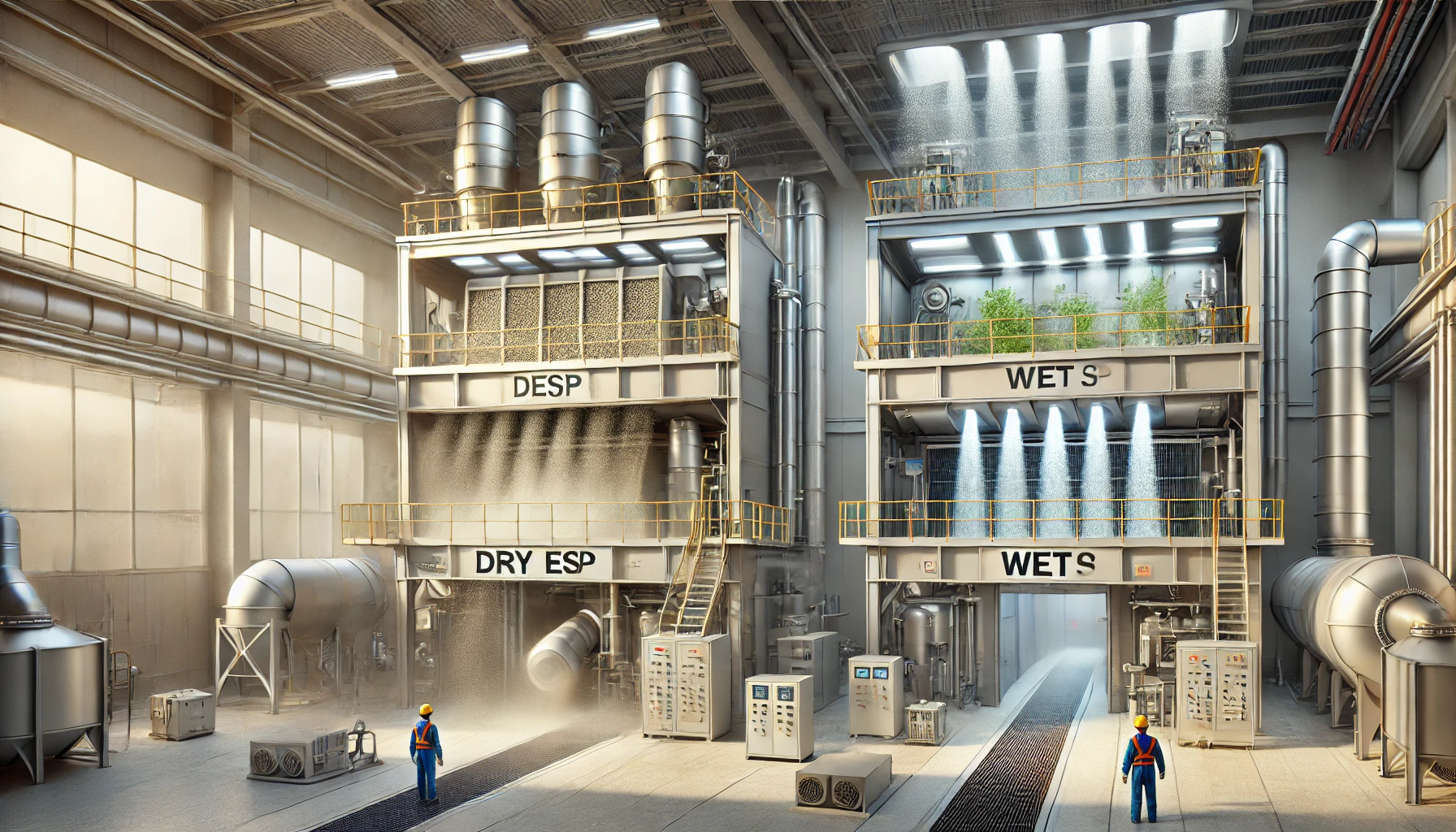Dust collection is a technology that removes particulate pollutants from industrial processes. Electric dust collectors use electrons to capture dust and are divided into dry and wet types, with wet types becoming increasingly important due to recent environmental regulations.
Dust collection is an important technology for removing particulate pollutants from processes in industrial sites, which is essential for environmental protection and worker health. As industry develops, air pollution is becoming a serious problem, and it is becoming increasingly important to respond to it. When pollutants are released into the air, they can have harmful effects on human health and, in the long run, contribute to climate change. Therefore, the development and application of efficient dust collection technology is becoming an essential part of modern industry.
Electrostatic precipitation, in particular, is a highly effective method of filtering pollutants by making artificially generated electrons adsorb onto dust or harmful substances and then capturing them on a dust collector plate. Electrostatic precipitators work by electrically charging the particles of pollutants and adsorbing them onto a collection plate. This is more efficient than physically removing the pollutants, and has the advantage of effectively removing even the smallest particles. Because of this, electrostatic precipitation is widely used in a variety of industries.

Electric dust collectors are also categorized into dry and wet depending on the way the dust collector plate is cleaned. Most of the dust collectors installed and operating in power plants in Korea are dry electrostatic precipitators. Dry electrostatic precipitators are favored by many power plants due to their ease of maintenance and low operating costs. However, with the recent tightening of environmental regulations, dry electrostatic precipitators are no longer sufficient for pollutants such as ultrafine dust. Since ultrafine dust can be inhaled directly into the human respiratory tract and cause serious health problems, it is important to remove it effectively. Therefore, the recent trend is to use wet electrostatic precipitators as the final pollution control equipment.
The body of a wet electrostatic precipitator can take many forms, but a cylindrical dust collector can be used as an example. First of all, the lower part of the body is connected to the passage where the contaminated gas enters, and the upper part is connected to the passage where the contaminants are filtered out and the clean air is discharged. At the center of the cylinder is a discharge rod with a pointed discharge needle, and a dust collector plate is installed on the inner wall of the cylinder to capture contaminated particles. The discharge rod and the dust collector are connected to the (-) and (+) poles, respectively, by a high-pressure generator. In addition to this, a device that supplies cleaning water to the dust collector plate to remove the captured pollutants is additionally installed.
The process of removing pollutants from a wet electrostatic precipitator is as follows: first, a high voltage is continuously applied to the discharge rod through a high voltage generator, which causes a corona discharge to occur at the tip of the discharge rod. Corona discharge is when a gas, which unlike metal, is insulated from electricity, has its insulation broken by the high voltage. When a high voltage is continuously applied to an object with a pointed tip, such as a needle, the (-) charge is drawn to the point and the electrostatic force increases rapidly. The gas molecules around it are then stripped of their (-) electrons from their nuclei, breaking the insulation of the gas. The electrons generated by the corona discharge are then polarized and directed toward the (+) pole of the dust collector, where they collide with microscopic pollutants in the air as they pass between the discharge rod and the dust collector. These collisions cause the electrons to adsorb to the surface of the pollutant, and the pollutant becomes negatively charged, which is called electrification of the pollutant. The charged pollutants, or charged particles, are drawn toward the dust collector by the electric field created between the discharge rod at the (-) pole and the dust collector at the (+) pole, where they are captured by the dust collector, and the pollutants are finally removed as they are washed away by the cleaning water.
As you can see, electrostatic precipitators play an important role in protecting our air quality by effectively removing pollutants. However, in order to keep up with the ever-evolving environmental regulations, it is necessary to introduce new ways of collecting dust as technology advances. These efforts will ultimately contribute to making our environment cleaner and healthier. For example, in recent years, various studies have been conducted to further increase the efficiency of electrostatic precipitators. Examples include leveraging nanotechnology to maximize the surface area of the dust collector, or using new materials to improve the efficiency of pollutant capture. Technologies are also being developed to optimize the airflow inside the dust collector so that pollutants are better adsorbed onto the dust collector. These technological innovations will further improve the performance of electrostatic precipitators, contributing to better air quality.
In conclusion, electrostatic precipitation technology plays an important role in the effective removal of pollutants from industrial sites. The harmonized use of dry and wet electrostatic precipitators provides the flexibility to respond to a wide range of pollutants. Continued technology development and response to environmental regulations are essential to creating a cleaner air environment, and we look forward to continuing these efforts in the future.
